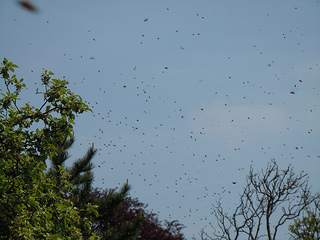
Thanks to amateurs and experts at waarneming.nl, the Netherlands is currently the only country in the world that is able to properly and automatically count insects, and plans to spend this summer doing so.
Using 100 camera traps that will be placed throughout the country specifically developed to automatically count and recognise insects, Software will be ‘trained’ using a photo database containing several million photos. The size and quality of this database is apparently unique in the world.
Counting and identifying insects gives researchers insight into the numbers of insects nationally as well as the effectiveness of measures being applied to restore biodiversity. According to recent publications in scientific research, there’s an alarming drop in numbers of insects in Western Europe and in Dutch nature reserves. Regular folks like myself often see adverts about the lack of bees, with garden centres selling seed mixtures for plants that attract bees and butterflies.
Using camera traps is a bid deal because they can count and cover more ground as it were. The Netherlands apparently leads the field automatic image recognition of insects and the technique, sponsored by the World Wildlife Fund, will now be delivered in time for the summer.
(Link: phys.org, Photo of Bee swarm by quisnovus, some rights reserved)





